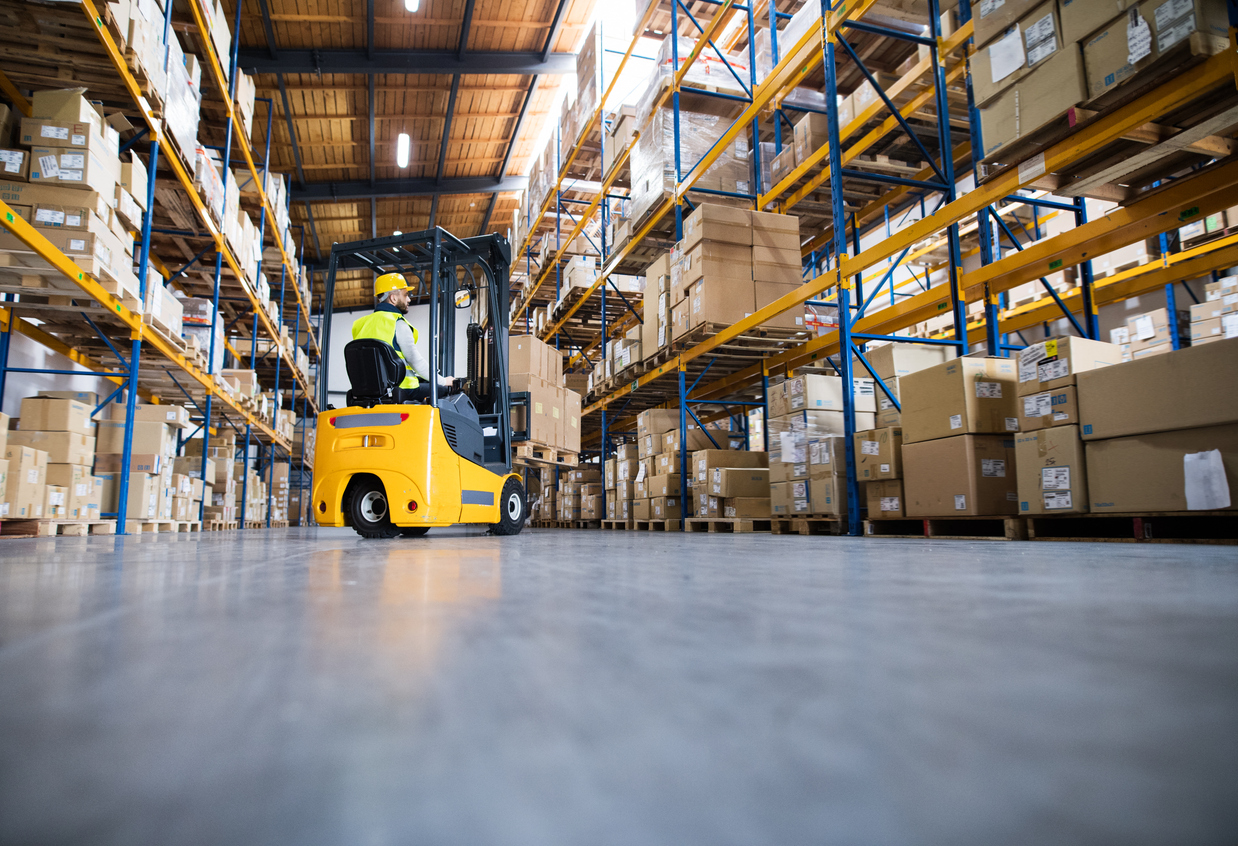Warehouse operations are expensive to run. An increase in demand, led by the boom in ecommerce, means that operational costs rise as the business grows, with longer turnaround times and bottlenecks impacting efficiency.
What’s more, fleet and vehicle running costs and maintenance take a toll, as well as other operational inefficiencies and human error. It all adds up, and warehouse operations can soon find themselves wading through rising costs with no obvious solution in sight.
It doesn’t have to be like that, though. Powerfleet gives warehouse operators the tools they need to identify their cost-saving goals, to see where savings can be made, and to put a plan in action that quickly gets results.
What are the key areas of financial cost saving using Powerfleet?
When it comes to bringing any new technology onboard, operators want to know what they’ll get in return for their investment.
Powerfleet is no different, but instead of providing one solution, Powerfleet telematics gives warehousing operators the chance to analyze different data streams to reach varied conclusions. To put new processes in place that can save money immediately and into the long term.
Whether that’s by reducing fleet and equipment numbers, streamlining maintenance and repairs, or encouraging better efficiency and productivity, here’s how Powerfleet lets warehouse operators lower costs and make considerable financial savings.
Fleet and equipment reductions
A quick and efficient way to reduce costs in warehousing is to reduce the number of fleet vehicles and equipment in operation. It sounds counterintuitive to efficient operations, to have less vehicles working at any given time, but it works.
The concept of ‘right-sizing’ can have a profound impact on expenditure. By identifying how many vehicles a warehouse operation needs, it’s possible to sell the excess without damaging efficiency. Powerfleet can give you access to all of this data to help inform your decision-making.
A vehicle replacement strategy will also help to keep fleet numbers and costs down. By replacing vehicles at optimal times, taking into account resale value, fuel efficiency, and incidents, etc,, you can prevent costly repairs and keep your fleet moving longer.
Scheduled maintenance and repairs
Mechanical failures are a huge drain on efficiency and productivity, not to mention the unexpected costs that emergency maintenance and repairs bring with them. It’s a scenario that’s almost as disruptive as an accident, but warehouse operators can be prepared.
With Powerfleet’s telematics dashboards, warehouse operators can access the insights and data needed to take action before failure hits and the bills add up.
This pre-emptive maintenance helps to ensure that vehicles such as forklifts and lift trucks are out of action for a minimal amount of time, with measures in place to ensure that there’s no negative impact on productivity and efficiency, and that money is not lost unnecessarily.
Implementing pre-emptive maintenance may come with an initial cost. Still, by reducing downtime, improving safety with regular inspections and repairs, and extending the lifespan of equipment, it soon becomes cheaper than the alternative of waiting for mechanical issues to present themselves.
Increased productivity and efficiency
By looking at the insights Powerfleet’s dashboards and Unity system provides, it becomes easier to see where changes can be made. Whether that’s reducing engine idling time, cutting the number of vehicles in the fleet, or optimizing the time of drivers and warehouse staff when they’re on the floor, they’re all options when you can see the data.
With the right targeted data, it becomes possible to implement new processes and incentives. By making employees aware of expected KPIs you can begin to build a new culture that prioritizes the changes you want to see. That, in turn, will increase both productivity and efficiency in those areas. When employees know what is expected of them, and the positive impact it will have, they will adopt the changes and make them happen.
It all starts with plugging your data into Powerfleet.
How do customer financial benefits vary by industry?
Powerfleet offers customers a durable solution, one that can be used to find efficiencies and savings across different industries.
Powerfleet carried out research on our customers’ savings over a 12 month period, taking in 40,000 vehicles across over 800 locations to discover how much they could save in specific areas,
Here’s what the data showed across four industries, as well as the overall annual savings. :
Retail distribution
- Fleet/equipment reductions – 4% ($440)
- Scheduled maintenance and repairs – 6% ($204)
- Productivity improvements – 2% ($2,757)
- Impact-related vehicle damage reduction – 50% ($611)
- Impact-related facility damage reduction – 50% ($1,325)
- Streamlined incident investigation – 50% ($509)
- Electronic pre-use safety inspections – 20% ($287)
Total annual savings per vehicle – $6,132
Grocery distribution
- Fleet/equipment reductions – 3% ($330)
- Scheduled maintenance and repairs – 6% (136)
- Productivity improvements – 1% ($919)
- Impact-related vehicle damage reduction – 50% ($407)
- Impact-related facility damage reduction – 50% ($883)
- Streamlined incident investigation – 50% (339)
- Electronic pre-use safety inspections – 20% ($191)
Total annual savings per vehicle – $3,206
Consumer packaged goods (CPG) manufacturing and warehousing
- Fleet/equipment reductions – 5% ($549)
- Scheduled maintenance and repairs – 3% ($120)
- Productivity improvements – 3% ($4,866)
- Impact-related vehicle damage reduction – 50% ($719)
- Impact-related facility damage reduction – 50% ($1,559)
- Streamlined incident investigation – 50% ($559)
- Electronic pre-use safety inspections – 20% ($338)
Total annual savings per vehicle – $8,749
Heavy manufacturing and warehousing
- Fleet/equipment reductions – 8% ($879)
- Scheduled maintenance and repairs – 3% ($112)
- Productivity improvements – 4% ($6,055)
- Impact-related vehicle damage reduction – 50% ($671)
- Impact-related facility damage reduction – 50% ($1,455)
- Streamlined incident investigation – 50% ($559)
- Electronic pre-use safety inspections – 20% ($315)
Total annual savings per vehicle – $10,046
While heavy manufacturing and warehousing saw the biggest annual benefit thanks to Powerfleet’s productivity improvements, the statistics also show consistency across the board.
Each of the four sectors saw an improvement of 20% by using electronic pre-use safety inspections. What’s more, all four sectors saw an improvement of 50% in impact-related vehicle damage reduction, impact-related facility damage reduction, and streamlined incident investigations.
Even smaller benefits, such as the 1-4% improvements in productivity, whilst less substantial, provide real savings and benefits.
Case Study
A multi-national food and beverage company and long-time customer of Powerfleet’s came to us years ago for help with improving in-warehouse safety and efficiency.
This customer has a long history of embracing the latest cutting-edge technology to benefit its supply chain operations, such as using blockchain technology to secure shared data across the chain. All of which made it the perfect partner to quickly reap the benefits of integrating Powerfleet’s in-warehouse solution.
The data necessary for success
This particular customer was very clear about what they needed from Powerfleet’s in-warehouse system.
They needed to know:
- The amount of time forklift operators were actively working
- The number of pallets lift truck operators moved each shift
- How many damage-causing impacts were recorded by lift truck operators
With that data visible, brought together in Powerfleet’s Enterprise Dashboards thanks to our use of the Unity system, the customer could start to measure the safety cost of lift truck throughput: creating a culture of safety and understanding where cost savings could be made.
Using the Powerfleet data to make positive changes
The food and beverage customer used the insights gained through Powerfleet’s dashboards to create key performance indicator (KPI scorecards. Used by drivers, supervisors, and warehouse managers alike, these scorecards formed the basis of a rewards system, providing cash bonuses and other incentives when KPI targets are met.
The effect was striking. By using Powerfleet’s Enterprise dashboards, the food and beverage concern quickly changed the way that it measured and balanced productivity and efficiency. With better insights into the number of pallets moved, the number of collisions, and the difference between active time spent using equipment and paid time, a new approach could be built using incentives.
With an 85% reduction in accidents and damage, and a 100%compliance rate to the key safety metrics, the lasting result is not just a new way to consistently measure and manage productivity and associated costs, but a stronger culture of safety within the company and its warehouses,
“What made Powerfleet’s Enterprise Dashboards work for us? We had a plan going in—what data we wanted and how we were going to use it. But before we took any action, we validated the data, then collected it for several months to benchmark forklift driver performance. Only then did we launch an incentive program for drivers, supervisors, and warehouse managers who met or exceeded those benchmarks. Now we have data we never had before to measure and balance productivity, in terms of pallets moved, with safety, in terms of forklift impacts”. – National Warehouse Manager
Powerfleet’s data can help you create a culture of safety that also saves money. Find out more by
book a demo today.









